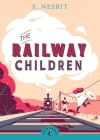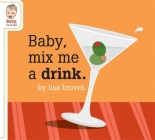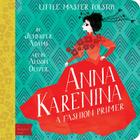Dear Aunt Debbie,
And then there are the books that your kid loves and you hate.
Over the last couple of months, as we read
The Penderwicks together each morning and Eleanor encouraged me to make
The Marvelous Land of Oz our next bedtime chapter book with Isabel, she has also continued her own voracious independent reading habits. At school, she exhausted her own 2nd-grade classroom library, and wrangled herself permission to go book-shopping in a 3rd-grade classroom (with a teacher known for her love of books). At home, Eleanor provides me with a constantly updated list of titles she wants to take out from the library (thank heavens for the public library!), and we cart them back and forth to our local branch.
The series that has risen to the top of the library list most recently is Rachel Renée Russell's
Dork Diaries. I glanced at them as we brought them home: cartoony drawings, fake-handwriting font, lots of lines WRITTEN IN ALL CAPS!!!! Very tweeny feeling.
I had a sense that these were not going to be my new favorite books. Still, like you and
Neil Gaiman in this 2013 lecture, I'm a big believer in letting kids read pretty much anything they want, at least if it's not wildly age-inappropriate and
if they can read it to themselves without you getting involved. But I do like to keep tabs on what Eleanor is ingesting, so we can talk about it afterwards.

Earlier this week, I had a chance to sit down and read one of the Dork Diaries books: number 6,
Tales from a Not-So Happy Heartbreaker. And wow. There is so much not to love.
The books are written as a series of diary entries of middle-schooler Nikki Maxwell, the "dork" of the title. Nikki has two best friends (sorry, "BFFs!!!"), a bratty younger sister, a perfect-boy crush, and a nemesis, MacKenzie: "a shark in lip gloss, skinny jeans, and platform heels." Pure evil. Nothing redeeming here.
What does dork mean, in this context? Apparently it means that Nikki sees herself as unpopular, second-guesses and self-censors her thoughts and actions, and pays extreme attention to every possible slight from the kids around her. Like
Bella in Twilight and a host of other middle-grade and YA heroines, she's a girl who constantly talks about how uncool she is without noticing that the people around her all seem to like her. Her intense focus on her own flaws is accurate to the middle school state of mind, I suppose, but it's also not really what I want my daughter reading as she grows into those years.
As I read, then skimmed, through the book, I started thinking about the conversation I wanted to have with Eleanor. Not an "I hate your book choice, please stop reading this series" conversation --
as I've mentioned before, I read my share of Sweet Valley High and other gender-essentialist drek in my time -- but a "Hey, I read this book, and here's the thing I don't like so much about it, what do you think?" conversation.
One of the things that bothered me the most about Nikki was her self-censoring. There's a subplot throughout the book about Nikki needing to pass a swimming skills class, but being terribly afraid of sinking. She talks a lot about how she's going to fail, brings in flotation devices she's not allowed to use, almost drowns during an exercise, and then in the last chapter swims perfectly across the pool when she thinks there's a shark following her (it's a scuba fin). So apparently she could swim just fine the whole time.
At one point, Nikki dives in scuba gear:
"Sorry, Miss Maxwell," my teacher said. "But you're diving for plastic rings, NOT sunken treasure! No scuba gear is allowed!!"
Apparently, it was against the pool rules. But HOW was I supposed to know THAT?!
The only sign about rules I saw said...
WCD POOL RULES
1. NO running!
2. NO eating!
3. NO horseplay!
4. NO peeing in the pool!
5. NO float toys!
There was nothing on that list that said...
NO SCUBA GEAR!
That's when I totally lost it and yelled at my teacher: "Sorry, lady, but I'm NOT some humpback whale capable of diving to the deepest, darkest, most dangerous depths of the pool. I NEED my mask, wet suit, regulator, tank, and scuba fins. Besides, the water is so deep my eyeballs could pop out. And I could die from decompression sickness.
"Worse yet, YOU didn't even bother to have an ambulance here just in case I needed to be rushed to the hospital! So let me see YOU dive to the bottom of the pool without having a massive stroke or something!"
But I just said that in my head, so no one else heard it but me.
That diving skills test was SO unfair! I should definitely get a do-over!! I'm just sayin'!!
Whew. Good thing she didn't actually try to make a case to her teacher directly when she thought something wasn't fair. Much better to keep quiet and rant about it afterwards.
Walking Eleanor to the school bus yesterday morning, I opened the conversation. I told her I'd read the book, she asked what I thought, and I said I wasn't crazy about it. I focused on the way that Nikki talks about herself negatively, her lack of self-confidence, and how those things play into stereotypes about girls. Eleanor said, "Mom, I don't want to be like Nikki -- it's just a book!" and I said I knew that, but I wanted her to think a little bit about how Nikki talks about herself while she's reading. She agreed that it was weird that Nikki acted like no one likes her when they clearly do. And then the bus came, and she got on, with another couple of books tucked into her backpack. So much more to take in, so much more to process.
Love, Annie
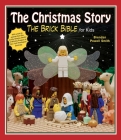 I've already written about my favorite nativity book for kids: Julie Vivas' exuberant Nativity. (That post is full of links to many of our other Christmas blog entries.) It's still the best. But here's another for the construction-minded child:
I've already written about my favorite nativity book for kids: Julie Vivas' exuberant Nativity. (That post is full of links to many of our other Christmas blog entries.) It's still the best. But here's another for the construction-minded child:



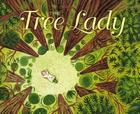
















.JPG)







